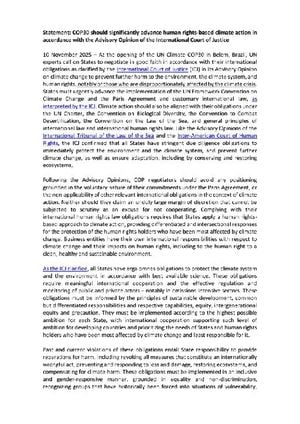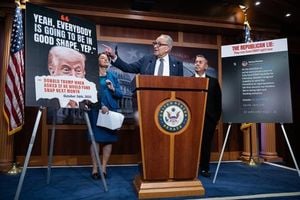On Wednesday, October 15, 2025, the corridors of the Pentagon were filled with the sound of rolling chairs and the shuffle of boxes as dozens of seasoned reporters packed up their belongings and turned in their coveted access badges. This collective walkout—a rare, high-profile protest against new government-imposed restrictions—marked a dramatic escalation in the ongoing struggle between the U.S. military’s top brass and the journalists who cover them.
The catalyst for this exodus was a new set of press access rules imposed by Defense Secretary Pete Hegseth. According to The Associated Press, these rules would leave journalists vulnerable to expulsion if they reported on any information—classified or otherwise—that had not received Hegseth’s explicit approval for release. The policy, which required reporters to sign a document acknowledging these restrictions, was widely seen as a direct threat to the independence of the Pentagon press corps.
“It’s sad, but I’m also really proud of the press corps that we stuck together,” said Nancy Youssef, a veteran reporter for The Atlantic who has covered the Pentagon since 2007. As she carried a map of the Middle East out to her car, Youssef’s words captured the bittersweet resolve felt by many of her colleagues. For them, the choice was clear: either sign away their ability to solicit information and risk being labeled a security threat, or walk away from the very seat of military power in Washington.
The government’s stance, however, was equally unyielding. At a White House briefing the day prior, President Donald Trump threw his full support behind Hegseth’s rules. “I think he finds the press to be very disruptive in terms of world peace,” Trump told reporters, adding, “The press is very dishonest.” Trump’s public endorsement came on the heels of a year marked by legal battles with major news outlets, including The New York Times, CBS News, ABC News, The Wall Street Journal, and The Associated Press. The president’s ongoing campaign against what he perceives as hostile media has only deepened the rift between his administration and the press.
The new Pentagon policy didn’t just target the big names. At least 30 news organizations, representing a broad spectrum from legacy publications to digital upstarts, refused to sign the policy, according to USA TODAY. The Pentagon Press Association, which counts 101 members from 56 outlets, spoke out forcefully against the rules. In a rare show of unity, organizations as ideologically diverse as Fox News and Newsmax joined The Associated Press and The New York Times in instructing their reporters to vacate rather than comply. The only notable exception was One America News Network, which signed the agreement—likely, as former Pentagon reporter Gabrielle Cuccia told the AP, in hopes of currying favor with the Trump administration.
As the Defense Department’s 4 p.m. deadline approached, the Pentagon’s press area became a scene of quiet determination. Reporters carted out chairs, copying machines, stacks of books, and even old photos—symbols of years, sometimes decades, of reporting from the heart of U.S. military operations. Shortly after the hour, a group of about 40 to 50 journalists left together, handing in their badges and stepping into the autumn afternoon. Some, like Navy reporter Heather Mongilio, marked the moment on social media. “Today, I’ll hand in my badge. The reporting will continue,” she wrote, underscoring a sentiment echoed by many: while the physical proximity was gone, the mission remained unchanged.
But what exactly did these new rules entail? As USA TODAY detailed, the policy required journalists to acknowledge that they could be branded security risks and have their badges revoked if they asked Pentagon employees to disclose not just classified, but also certain types of unclassified information. For reporters, this blurred line was untenable. “To agree to not solicit information is to agree to not be a journalist,” Youssef argued. “Our whole goal is soliciting information.”
Retired U.S. Army General and Fox News analyst Jack Keane echoed these concerns, telling Hegseth’s former network, “What they’re really doing, they want to spoon-feed information to the journalist, and that would be their story. That’s not journalism.” Keane recalled requiring new brigadier generals to take a class on the media’s role in democracy—an effort, he said, to ensure they saw reporters as a conduit to the American public, not adversaries. “There were times when stories were done that made me flinch a little bit,” Keane admitted, “but that’s usually because we had done something that wasn’t as good as we should have done it.”
Despite the sweeping new restrictions, reporters have made it clear that their work will go on. Some sources within the military are expected to continue speaking to journalists, though there’s widespread concern that the Pentagon’s threats will chill the flow of information. As NPR’s Tom Bowman noted in an essay, “With no reporters able to ask questions, it seems the Pentagon leadership will continue to rely on slick social media posts, carefully orchestrated short videos and interviews with partisan commentators and podcasters. No one should think that’s good enough.”
The deeper implications of this standoff remain to be seen. Some observers believe that images of journalists leaving the Pentagon in protest are unlikely to sway supporters of President Trump, many of whom have long harbored deep skepticism toward the mainstream press. But for others, the walkout represents a crucial stand for the independence of the Fourth Estate. As Lisa Gilbert of Public Citizen, one of the organizers of the upcoming “No Kings” protests, told USA TODAY, “It’s not just policies we don’t like … but it’s also actual chipping away at democracy, at foundational rights and prerogatives that we all expect.”
For now, the Pentagon’s press rooms sit empty, their walls stripped of the photos and mementos that once testified to decades of watchdog reporting. The journalists who once filled those spaces are scattered, but their resolve appears unbroken. As Mongilio put it: the reporting will continue—even if, for now, it must be done from the outside looking in.






